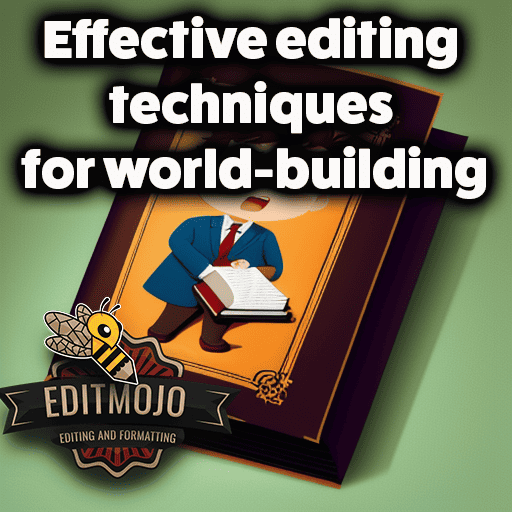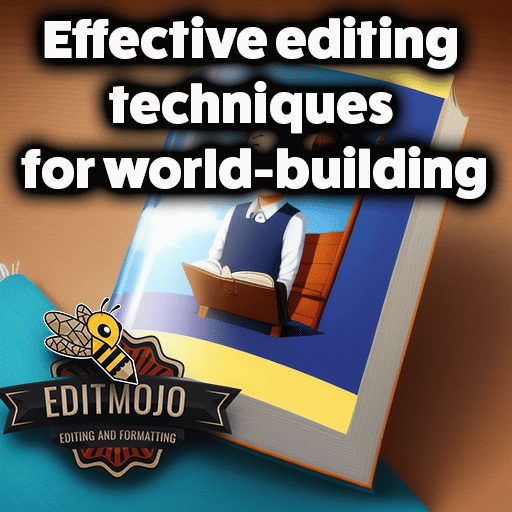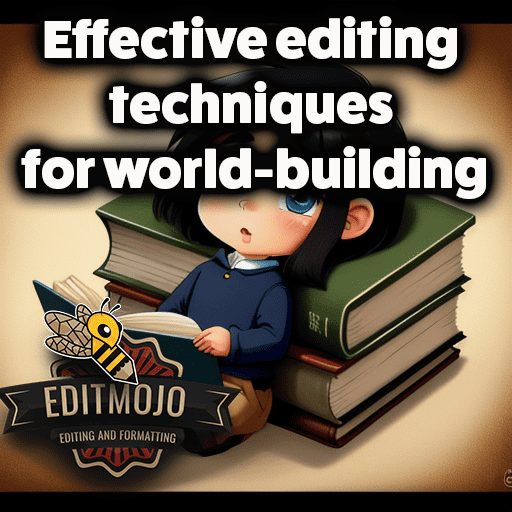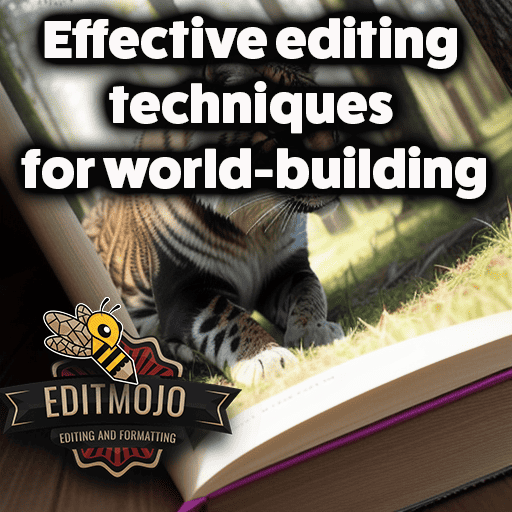Effective Editing Techniques for World-Building
Effective editing techniques for world-building. World-building is the backbone of any immersive narrative medium. Whether it’s a dystopian novel, a fantasy video game, or a sci-fi film, world-building offers an in-depth backdrop that brings stories to life. However, weaving an entire world from scratch is no easy task. This is where editing plays an essential role, refining and shaping the world until it’s as real to the reader or viewer as our own.
Key Takeaways
| Section | Key Points |
|---|---|
| Understanding the Basics of World-Building | The five pillars of world-building: Geography, History, Culture, Characters, Plot. Understanding ‘show, don’t tell’ concept. Balancing world-building with storytelling. |
| Effective Editing Techniques: An Overview | Editing ensures pruning excessive details, consistency, clarity, and improving narrative flow. Different stages of editing focus on different aspects. |
| Editing Techniques for Each Pillar | Geographic consistency; historical and thematic consistency; cultural realism; character consistency; plot consistency. |
| The Role of Feedback | Use alpha and beta readers for feedback. Learn to interpret feedback constructively. |
| Case Studies & Practical Exercises | Analyze renowned creators’ works. Practice consistency checks, peer reviews, and critiquing other works. |
Understanding the Basics of World-Building
Before delving into editing techniques, let’s lay the foundation with the basics of world-building. World-building rests on five pillars: Geography, History, Culture, Characters, and Plot. Each pillar interconnects with the others, forming a cohesive, believable world.
The concept of ‘show, don’t tell‘ is also crucial in world-building. Instead of bombarding your audience with information, subtly weave world-building elements into the narrative. Maintaining a balance between world-building and storytelling is equally important. The world should enhance the story, not overwhelm it.
Lastly, avoid common pitfalls, such as inconsistency, over-detailing, and neglecting cultural sensitivity. Recognizing these issues is the first step in effective editing.
Effective Editing Techniques in World-Building: An Overview
Editing in world-building isn’t just about grammar and punctuation. It’s a meticulous process involving pruning excessive details, ensuring consistency, enhancing clarity, and improving narrative flow. Different stages of editing focus on different aspects, such as developmental editing (story structure), line editing (style and language), and copy editing (grammar and punctuation).

Detailed Editing Techniques and Tips for Each Pillar of World-Building
Geography
Geography is more than just mountains, rivers, and cities. It affects climate, resources, and ultimately, the lifestyle of inhabitants. Thus, editing should ensure that geography is consistent and credible.
Use maps or visual aids to track geographical features. This can help spot inconsistencies and make editing easier. But remember the balance: Don’t let descriptive elements overshadow the narrative.
History
When editing history, focus on chronological consistency. Use timelines to keep track of major events. Weave history into the narrative subtly to avoid info-dumping. Maintain thematic consistency—the historical events should align with the overall themes of your world.
Culture
Cultures should be unique, believable, and respectful of real-world cultures. They are expressed through customs, traditions, and languages. During editing, check for cultural realism. Are the cultural elements consistent with the geography, history, and other aspects of the world?

Characters
Characters are the lens through which readers experience your world. They should accurately reflect the world’s values, norms, and history. During editing, ensure characters are consistent with their world. A character’s actions, beliefs, and background should all make sense within the world’s context.
Plot
The plot is deeply entwined with the world. The world shapes the plot, and the plot, in turn, influences the world. When editing, watch for any inconsistencies. For example, an action that defies the world’s established rules, or a sudden change in the world that only serves the plot, should be edited.
The Role of Feedback in Editing and Refining Your World
Editing isn’t a solitary process. Alpha and beta readers can provide valuable feedback from fresh perspectives. Learn how to solicit and interpret this feedback to refine your world-building. Remember, constructive criticism can be a powerful editing tool.
Case Studies: Effective Editing in World-Building
Analyzing
examples from renowned creators can offer valuable insights. For instance, J.R.R. Tolkien’s Middle Earth and George R.R. Martin’s Westeros are prime examples of effective world-building. Notice how these authors skillfully balance world-building with storytelling and maintain consistency throughout their works.

Practical Exercises for Sharpening Your Editing Skills
Editing, like any other skill, improves with practice. Here are some exercises:
- Consistency Checks: Select a chapter or a scene from your world. Is everything consistent with the rest of your world? Are there any elements that feel out of place?
- Peer Review: Share your work with fellow writers. Seek their input on how well the world-building aspects blend with the narrative.
- Critiquing: Review other works. Try to identify their world-building strengths and weaknesses. This can help you spot similar issues in your own work.
Conclusion
World-building is a journey, with editing as your loyal companion, refining and honing your world at every step. Harness the power of editing to create immersive, consistent, and credible worlds that captivate your audience. I invite you to share your experiences and thoughts on editing and world-building.
For further reading, I recommend World-Building: A Writer’s Guide to Constructing Star Systems and Life-Supporting Planets and The Guide to Writing Fantasy and Science Fiction.
So, grab your red pen, or fire up your favorite editing software, and let’s start building worlds!
Top Five Questions and Answers
- Q: What are the five pillars of world-building?
A: The five pillars of world-building are Geography, History, Culture, Characters, and Plot. - Q: Why is editing important in world-building?
A: Editing in world-building ensures consistency, enhances clarity, prunes excessive details, and improves narrative flow, thus making the world more immersive and believable. - Q: What are some effective editing techniques for world-building?
A: Some techniques include checking for geographic, historical, cultural, character, and plot consistency, weaving world-building elements subtly into the narrative, and maintaining a balance between world-building and storytelling. - Q: How can feedback be used in editing world-building?
A: Feedback from alpha and beta readers can provide fresh perspectives and highlight any inconsistencies or confusing elements. Constructive criticism can be a powerful tool in refining world-building. - Q: What are some practical exercises to improve editing skills in world-building?
A: Exercises can include performing consistency checks, soliciting peer reviews, and critiquing other works to identify world-building strengths and weaknesses.
